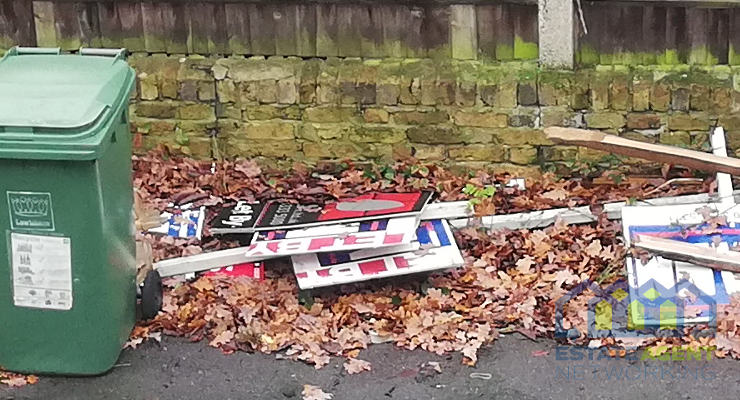Period home restoration: How to square the past, present and future
Are you looking forward to your next home restoration project? Whether you’ve fallen in love with an elegant Georgian townhouse or a magnificent Victorian country manor, it’s the building’s unique architectural features that make it stand out from the crowd.
Of course, falling in love is the easy part, but bringing an old period building back to life is not for the faint hearted. While restoring an old house can be the most rewarding thing in the world, it’s not something to be entered into lightly, and certainly not without doing your homework or due diligence.
We’ve put together some important questions you should be asking, and potential pitfalls you should be considering, before you decide to restore a historic building for life in the modern age.
Is the building listed?
Significant period properties may have listed status (or could be located in a Conservation Area). Listed buildings are considered to be of national importance on account of their special architectural or historic interest that is deemed worthy of protection.
Whether your home is Grade I, Grade II* or Grade II listed, in practical terms this means that you have to comply with an additional level of planning control over any changes you wish to make to the building’s interior and exterior.
Any work that affects the special interest of your home will require Listed Building Consent. It’s well worth establishing a good rapport with your local authority Conservation Officer to understand the type and extent of alterations that will and won’t be considered acceptable.
Who will carry out the work?
With any heritage building project, there’s always a risk of underestimating the extent of the work that needs doing. It’s also worth pointing out that it’s easy to underestimate the financial commitment needed to do the property justice. Historic building works require bespoke solutions that are sympathetic to the original, not a trip to your local DIY shed.
A historic building survey is a good starting point for any renovations you are considering. This type of structural survey should be carried out by a RICS accredited specialist surveyor who is familiar with historic buildings, such as this firm of historic building specialists. The survey will provide full information on the property’s materials, its general condition and any causes for concern – an invaluable reference document to draw on during the entire lifespan of the building project.
When it comes to choosing materials and contractors, you should be working with experienced craftsmen who are passionate about working with heritage buildings and fully understand the nature of the job. Whether your project involves exterior brickwork renovations, interior remodelling or decorations, carefully choose your professional building and design partners on the basis of the quality of their work.
Restore or replace?
Clearly, the world of today is a different place to the time when your period home was constructed. These days, architectural components and building materials are mass produced and much cheaper. Many elements are simply not built to last as long and are meant to be updated more frequently. This contrasts with the ethos of period construction when many parts of the home would have been custom made for the property and built for longevity.
Where this is the case, particularly with original features that speak your home’s unique story, you should restore rather than replace wherever possible. If your building is listed, this will be the default answer you’ll be given.
Original wooden sash windows are a classic case in point. Often draughty, rattly and crying out for attention, the temptation is to simply replace them with modern equivalents. However, with expert care and attention by an experienced window restoration company, these beautiful architectural features can be comprehensively overhauled and completely restored, leaving the integrity of your period house intact.
Past, present or future?
Much has been said about staying faithful to the architectural period and style of the building. But does this mean you are doomed to live in a museum? Of course not – your home needs to be fit for life in the 21st century. That’s the challenge of getting your period home restoration right.
That said, if you’re planning to bring your house up to today’s standards, you’re likely to be influenced by current home and interiors trends that may look out of date in a few years’ time. Since there’s no way of knowing what will be trending in 50 or 100 years’ time, designing your period property with the future in mind is a much safer bet. In fact, and this may well surprise you, renovating an old house is not so much about the past as it is about the future.
Take a long hard look at your period property and make decisions based on respecting the building’s unique character and preserving its enduring appeal. Ask yourself if, 50 years from now, the house will still look timeless? Will those architectural features and unique attributes that first attracted you to the house have been cared for? Will future owners be happy that you did everything you could to honour the building’s uniqueness and integrity? Or will the overall result be ‘a bit 2018’?
What to do with kitchens and bathrooms?
Nowhere is the potential clash between historic integrity and modern convenience more evident than when it comes to kitchens and bathrooms. In fact, looking at modern homes, it is a fact that bathrooms and kitchens are updated more frequently than any other rooms in the house.
Take careful look at the kitchen and bathrooms of your period renovation project. Chances are they’re no longer original, but just old fashioned. Pink and black tiled bathrooms were as fashionable in the 1950s as avocado coloured suites were in the 1970s. A fussy 1980s kitchen has large cathedral arched doors, little gallery rails and carved pelmets.
Renovating a kitchen or bathroom correctly takes a bit of work. Ask a bespoke kitchen design company such as this one to carry out background research into the history of the house and the period when it was built. Based on the information gleamed, the design of the new kitchen should fit seamlessly with the style of your home – now and in 50 years’ time – while still offering all of today’s mod cons.
Finally, when it comes to interior decorations and furnishings, resist the temptation to be too period perfect. Not every fixture and furnishing in an Art Nouveau house has to be from that time or in that style – it would feel oppressive and unreal to live like that.
In the same way that, say, a new build doesn’t just contain items made in the last few years – we’ve all got items collected over the years or handed down from previous generations – it is unrealistic to ‘curate’ your period home in that way.
While it’s important to stay true to your heritage, there’s magic in mixing things up. Some of the most interesting interiors thrive on the juxtaposition of new and old.







